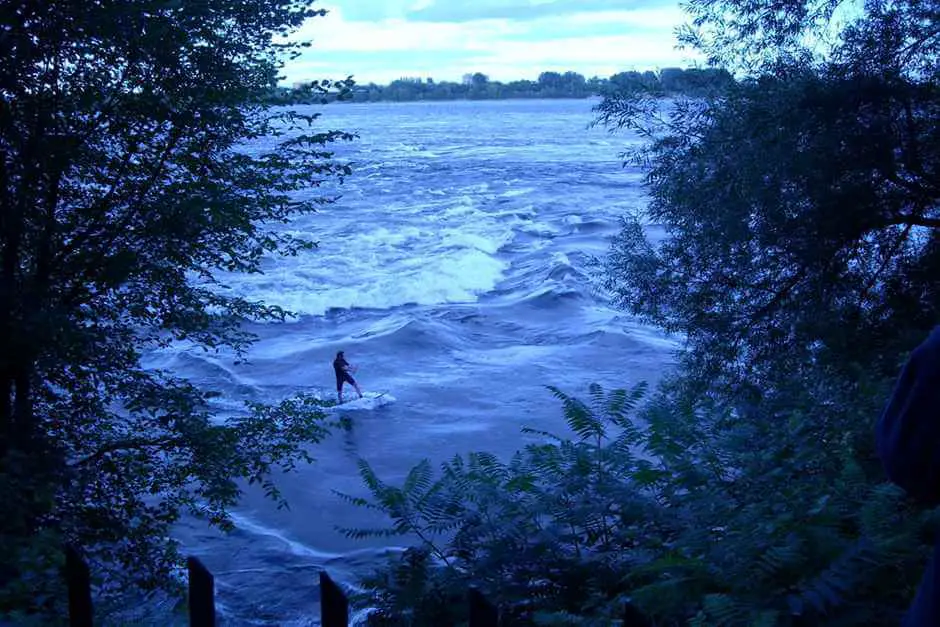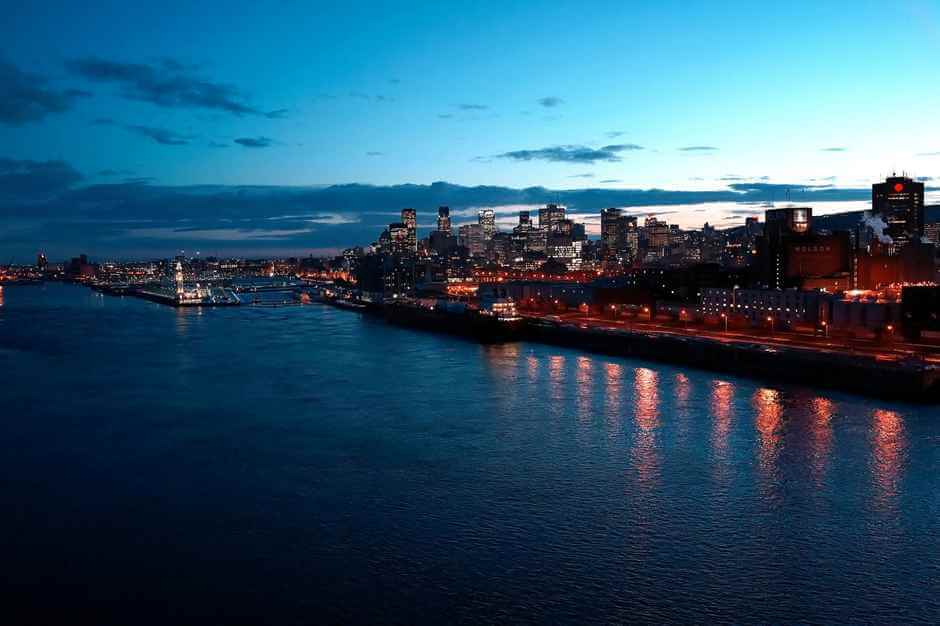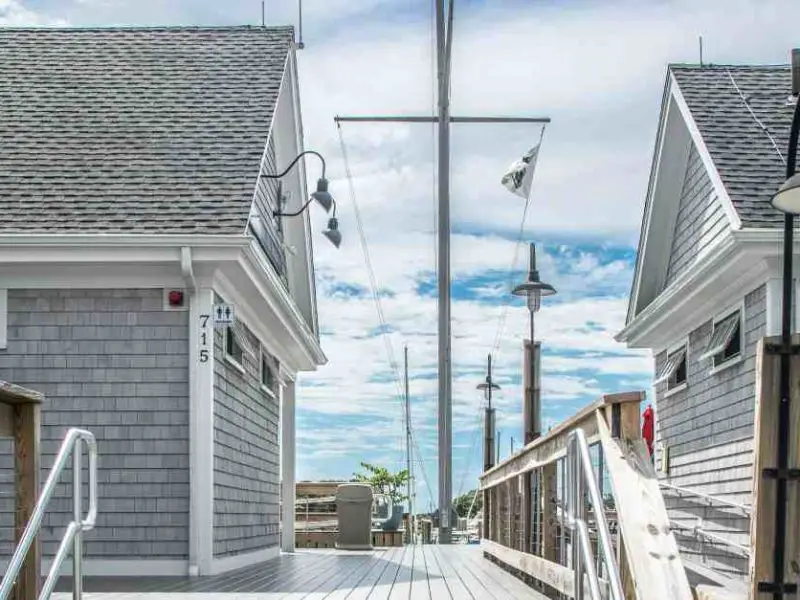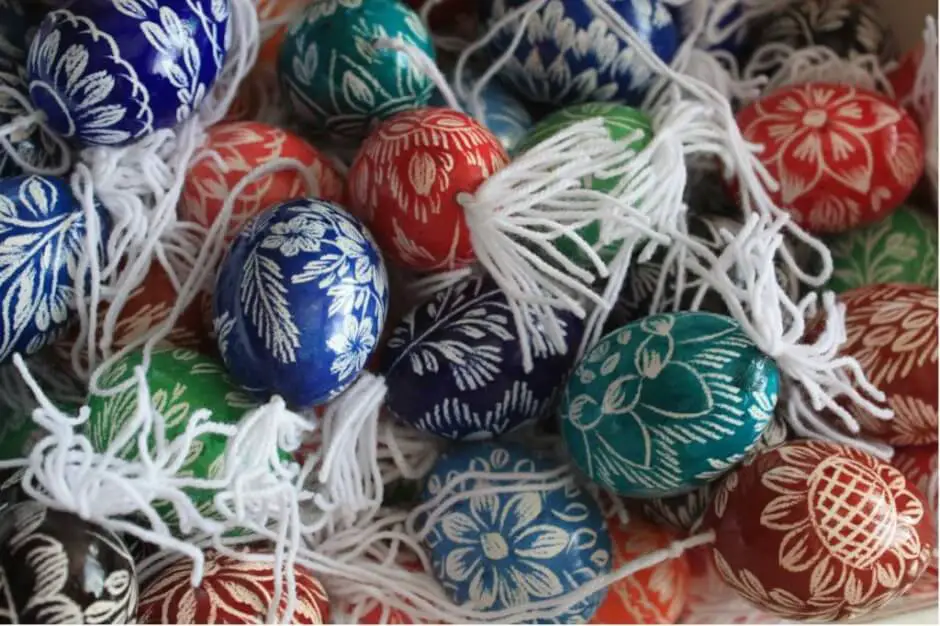Montreal on the St. Lawrence River
Actually, Montreal St. Lawrence River is not associated with the sea. After all, the Atlantic Ocean is 1600 kilometers from the metropolis in Quebec. Nevertheless, you quickly get a different impression when you stroll along the waterfront of Montreal. The quays are teeming with boats, yachts, pleasure boats and even cruise ships. Sure, the city is on an island, which is one reason for the numerous boats. Yachts and excursion boats can also head for nearby destinations on the Sankt Lorenz Strom. But cruise ships and large container ships? This clearly brings the sea closer. And with good reason. Today they can easily get here via the St. Lorenz river.
Maritime Montreal - is that right?
And this is only 270 kilometers away from here ever wider. From Quebec City, the estuary of the Saint Lawrence River opens so wide that the further east you go, you can only guess at the opposite bank of the river. A trip along the St. Lawrence River soon gives you the feeling of being at sea, and it is no wonder that ocean-going ships call at the port of Montreal.
Things to see along the St. Lawrence River in Montreal
This can be reached all year round via the Sankt Lorenz Strom shipping canal. In fact, the Port of Montreal website states that winter is the busiest time in the city's port. Since 1964, the Canadian Coast Guard has been using icebreakers to keep the navigation channel in the Saint Lawrence River clear as far as Montreal. Until the ships reach the port of Montreal, they do not have to go through any locks. It is only after the Lachine waterfalls that navigation on the St. Lawrence River becomes more difficult. The lock systems of the St. Lorenz Seaway connect Montreal with the upstream regions of Canada and the USA.

The rapids of Lachine
The Lachine rapids were of great importance for the development of the city. Even the Iroquois had built a large village on the waterfalls, Hochelaga, which is often mentioned in the first reports about this region. And the French also quickly recognized the important strategic importance of these rapids in the St. Lawrence River. At this point, the river suddenly drops a few meters. This causes the inflowing masses of water to whirl and create standing waves that are just as insurmountable to the canoes of the fur traders as they are to modern ships today. Only when the Lachine Canal was opened in 1825, canoes and ships were able to avoid the deceptive rapids on the waterway. Later, the St. Lawrence Seaway undertook this task, and today oceangoing vessels can sail across the locks of this artificial waterway to the center of the Americas.
The rapids of Lachine have lost their menace today and are often used by surfers for a ride on the waves. Beneath the nested housing units of Habitat 67 on the Cité du Havre peninsula, you can watch them surfing on the south-facing side of the peninsula. They almost seem to be standing in the water, so constant is the wave that arises through the underwater slope.
Once upon a time, fur traders drove west past the Lachine Falls
Behind the Lachine waterfalls the fur traders once started on their way to the west with their large transport canoes. At the old Lachine Channel was a trading depot where furs and skins from western Canada were collected and shipped on to the hypermarkets in Europe, where the fine undercoat of the beaver was further processed into elegant felt hats.

Montreal on the St. Lawrence River - port for cruisers and container ships
And even in Montreal's modern commercial and cruise port, there is evidence of the importance of the Lachine Falls. This is where freight trains once transported grain and other products from the Midwest, which were initially stored in huge silos at the port. Today, these massive grain stores tower almost like memorials from days gone by. Those who do not know their history easily dismiss them as ugly marks of disgrace. But Silo 5 is now listed because it commemorates an important episode in the history of the Port of Montreal. The goods from the center of Canada were loaded onto container ships here and shipped to their destinations around the world.
Grain, sugar, petroleum products, machinery and consumer goods are still delivered by train today. Montreal is the most important railway junction in Canada to date. And the Port of Montreal is Canada's second busiest port – after Vancouver – and one of the busiest inland ports in the world. An average of 26 million tons of goods are shipped here every year.
A visit to the Port of Montreal, St. Lawrence River and Lachine Falls can be well planned on a tour of Canada's east. The Fur Trade at Lachine National Historic Site of Canada deals with the history of the fur trade.
Our tip for Montreal: Discover the culinary side of Montreal on a stroll through the residential area.

Questions and answers about Montreal on the Saint Lawrence River
How much time should I allow to visit the Port of Montreal and the Lachine Rapids?
That depends on how much time you have and how intensively you want to delve into the sights. If you are only planning a short visit, you should allow at least half a day to see the main sights. If you have more time and would like to learn more about the history of the region, you can also plan a full day.
Can I canoe the Lachine Rapids myself?
Yes, you can canoe the Lachine Rapids if you have sufficient canoeing experience. There are various providers who offer canoe rentals and guided tours.
What is the best way to get to the Port of Montreal on the Saint Lawrence River?
The Port of Montreal is well connected to the public transport network and can be reached by bus and metro. If you are arriving by car, there are various parking options near the port.
Can I also book a cruise from Montreal?
Yes, it is possible to book a cruise from Montreal. The Port of Montreal is a major port of call for cruise ships sailing the St. Lawrence River.
Are there any good restaurants near the Port of Montreal?
Yes, there are many good restaurants near the Port of Montreal offering a variety of cuisines and specialties. From local cuisine to international dishes, everything is there. Some restaurants also have nice harbor or city views.

Do you know this?
- Eastern Canada round trip to savor
- Discover Montreal attractions for connoisseurs
- Quebec Attractions
- From Montreal to Quebec along Kings Road
- Three museums in Vancouver
- Canada in the fall
- Schools, churches, monasteries - the religious heritage of Quebec
- Underwater world of the St. Lawrence River: explorer
- Never be speechless again: Your survival guide to the Quebec language
- Vancouver landmarks
Source: On-site research supported by Tourisme Montreal and Bonjour Quebec. However, our opinion remains our own.
Text: © Monika Fuchs and TravelWorldOnline
Video: © Copyright Petar Fuchs and TravelWorldOnline
Photos: © Copyright Monika Fuchs and TravelWorldOnline



